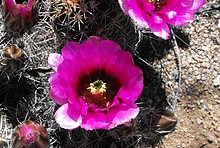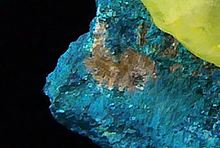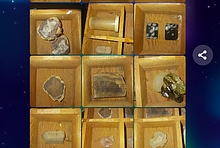Home PageAbout MindatThe Mindat ManualHistory of MindatCopyright StatusWho We AreContact UsAdvertise on Mindat
Donate to MindatCorporate SponsorshipSponsor a PageSponsored PagesMindat AdvertisersAdvertise on Mindat
Learning CenterWhat is a mineral?The most common minerals on earthInformation for EducatorsMindat ArticlesThe ElementsThe Rock H. Currier Digital LibraryGeologic Time
Minerals by PropertiesMinerals by ChemistryAdvanced Locality SearchRandom MineralRandom LocalitySearch by minIDLocalities Near MeSearch ArticlesSearch GlossaryMore Search Options
The Mindat ManualAdd a New PhotoRate PhotosLocality Edit ReportCoordinate Completion ReportAdd Glossary Item
Mining CompaniesStatisticsUsersMineral MuseumsClubs & OrganizationsMineral Shows & EventsThe Mindat DirectoryDevice SettingsThe Mineral Quiz
Photo SearchPhoto GalleriesSearch by ColorNew Photos TodayNew Photos YesterdayMembers' Photo GalleriesPast Photo of the Day GalleryPhotography
╳Discussions
💬 Home🔎 Search📅 LatestGroups
EducationOpen discussion area.Fakes & FraudsOpen discussion area.Field CollectingOpen discussion area.FossilsOpen discussion area.Gems and GemologyOpen discussion area.GeneralOpen discussion area.How to ContributeOpen discussion area.Identity HelpOpen discussion area.Improving Mindat.orgOpen discussion area.LocalitiesOpen discussion area.Lost and Stolen SpecimensOpen discussion area.MarketplaceOpen discussion area.MeteoritesOpen discussion area.Mindat ProductsOpen discussion area.Mineral ExchangesOpen discussion area.Mineral PhotographyOpen discussion area.Mineral ShowsOpen discussion area.Mineralogical ClassificationOpen discussion area.Mineralogy CourseOpen discussion area.MineralsOpen discussion area.Minerals and MuseumsOpen discussion area.PhotosOpen discussion area.Techniques for CollectorsOpen discussion area.The Rock H. Currier Digital LibraryOpen discussion area.UV MineralsOpen discussion area.Recent Images in Discussions
EducationChrysocolla in Chalcedony Enhancement

27th Mar 2018 10:42 UTCmario tapilouw
I am wondering if there is anyone knows about enhancement of Chrysocolla in Chalcedony. I was told that this stone can change its color, from brown into beautiful green or blue color, so I would like to ask if there's anyone got any experience with this mineral?
Thank you very much.
27th Mar 2018 16:16 UTCScott Rider

28th Mar 2018 02:17 UTCDoug Daniels

28th Mar 2018 02:19 UTCmario tapilouw

28th Mar 2018 02:55 UTCWayne Corwin
chrysocolla is not a crystal, read what Doug said.

28th Mar 2018 02:56 UTCWayne Corwin
28th Mar 2018 11:39 UTCReiner Mielke Expert

29th Mar 2018 07:12 UTCmario tapilouw

29th Mar 2018 22:16 UTCDave Owen

29th Mar 2018 23:06 UTCDave Owen

30th Mar 2018 13:34 UTCRolf Luetcke Expert
So, brown is a color I have seen in the above mentioned alteration process of the copper ores. Until the chrysocolla is studied fully, it will remain a big question. I do believe that the mineral tenorite I have seen at a number of mines in Arizona is not actually there but is the "black" chrysocolla instead.

31st Mar 2018 02:04 UTCDoug Daniels
Sounds like a thesis, if someone could scrounge up the funding for such an esoteric subject (that is, just not relevant to the price of tea in China these days).

31st Mar 2018 03:21 UTCAlfredo Petrov Manager
2nd Apr 2018 17:32 UTCRob Woodside 🌟 Manager
To disabuse those of you who think Chrysocolla is blue or greenish blue check out the new header photo and colour box https://www.mindat.org/min-1040.html

13th Apr 2018 08:41 UTCmario tapilouw




Mindat.org is an outreach project of the Hudson Institute of Mineralogy, a 501(c)(3) not-for-profit organization.
Copyright © mindat.org and the Hudson Institute of Mineralogy 1993-2024, except where stated. Most political location boundaries are © OpenStreetMap contributors. Mindat.org relies on the contributions of thousands of members and supporters. Founded in 2000 by Jolyon Ralph.
Privacy Policy - Terms & Conditions - Contact Us / DMCA issues - Report a bug/vulnerability Current server date and time: April 18, 2024 01:46:49
Copyright © mindat.org and the Hudson Institute of Mineralogy 1993-2024, except where stated. Most political location boundaries are © OpenStreetMap contributors. Mindat.org relies on the contributions of thousands of members and supporters. Founded in 2000 by Jolyon Ralph.
Privacy Policy - Terms & Conditions - Contact Us / DMCA issues - Report a bug/vulnerability Current server date and time: April 18, 2024 01:46:49











